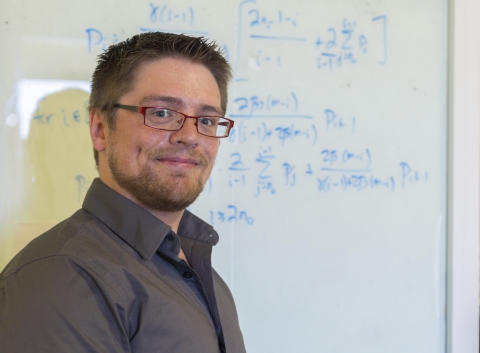Working with Suzanne Sindi, a professor of applied mathematics at UC Merced, Ph.D. candidate Jason Davis is trying to unlock the mysteries of prions and the destructive diseases they create. Instead of using a traditional lab, he relies on computer modeling and applied mathematics. It’s a growing form of interdisciplinary research that uses math to examine biological functions.

“Working in applied math is a great opportunity to see the ‘big ideas’ from across various scientific disciplines,” said Davis. “Few areas of study have such broad application and it is very rewarding to apply my mathematical knowledge to real problems, particularly in health.”
Prion diseases result from proteins that become misshapen or misfolded — often in the brain. These destructive proteins clump together as masses or chains and multiply by converting other healthy proteins into a corrupted form.
Mad cow disease is perhaps the most well-known prion disease. While prion diseases always are fatal in mammals, researchers have found that a protein in yeast can actually reform misfolded proteins and head off infection.
Through his research, Davis is trying to understand why and how that occurs in yeast, and to look for a similar healing thread in humans. To do so, he creates mathematical models of prion diseases and uses a computer to simulate the infection. Such computer modeling is faster and less expensive than traditional lab work, and no animals or organisms are used in the experiments.
See the full story here.



